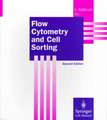Capillary Electrophoresis: Principles and Practice: Springer Lab Manuals
Autor Reinhard Kuhn, Sabrina Hoffstetter-Kuhnen Limba Engleză Paperback – 8 dec 2011
Din seria Springer Lab Manuals
-
 Preț: 385.84 lei
Preț: 385.84 lei -
 Preț: 362.59 lei
Preț: 362.59 lei - 18%
 Preț: 973.69 lei
Preț: 973.69 lei - 15%
 Preț: 695.85 lei
Preț: 695.85 lei - 18%
 Preț: 997.40 lei
Preț: 997.40 lei -
 Preț: 385.84 lei
Preț: 385.84 lei -
 Preț: 382.18 lei
Preț: 382.18 lei - 24%
 Preț: 1045.10 lei
Preț: 1045.10 lei - 15%
 Preț: 641.20 lei
Preț: 641.20 lei - 18%
 Preț: 939.33 lei
Preț: 939.33 lei -
 Preț: 381.43 lei
Preț: 381.43 lei - 15%
 Preț: 637.59 lei
Preț: 637.59 lei - 15%
 Preț: 639.25 lei
Preț: 639.25 lei -
 Preț: 376.68 lei
Preț: 376.68 lei - 18%
 Preț: 1822.40 lei
Preț: 1822.40 lei - 18%
 Preț: 953.82 lei
Preț: 953.82 lei - 15%
 Preț: 645.14 lei
Preț: 645.14 lei - 15%
 Preț: 689.93 lei
Preț: 689.93 lei - 23%
 Preț: 821.59 lei
Preț: 821.59 lei - 19%
 Preț: 588.70 lei
Preț: 588.70 lei - 5%
 Preț: 727.44 lei
Preț: 727.44 lei - 18%
 Preț: 1225.31 lei
Preț: 1225.31 lei - 15%
 Preț: 657.39 lei
Preț: 657.39 lei - 18%
 Preț: 949.73 lei
Preț: 949.73 lei -
 Preț: 386.99 lei
Preț: 386.99 lei - 15%
 Preț: 657.25 lei
Preț: 657.25 lei - 19%
 Preț: 555.63 lei
Preț: 555.63 lei -
 Preț: 380.63 lei
Preț: 380.63 lei - 18%
 Preț: 1226.11 lei
Preț: 1226.11 lei - 15%
 Preț: 649.22 lei
Preț: 649.22 lei - 15%
 Preț: 632.55 lei
Preț: 632.55 lei - 19%
 Preț: 584.77 lei
Preț: 584.77 lei - 15%
 Preț: 639.41 lei
Preț: 639.41 lei -
 Preț: 390.25 lei
Preț: 390.25 lei - 18%
 Preț: 781.31 lei
Preț: 781.31 lei - 15%
 Preț: 644.63 lei
Preț: 644.63 lei -
 Preț: 382.36 lei
Preț: 382.36 lei -
 Preț: 363.12 lei
Preț: 363.12 lei - 18%
 Preț: 961.23 lei
Preț: 961.23 lei -
 Preț: 416.29 lei
Preț: 416.29 lei - 18%
 Preț: 783.35 lei
Preț: 783.35 lei - 18%
 Preț: 791.88 lei
Preț: 791.88 lei - 15%
 Preț: 675.22 lei
Preț: 675.22 lei - 23%
 Preț: 1311.58 lei
Preț: 1311.58 lei -
 Preț: 381.43 lei
Preț: 381.43 lei
Preț: 644.82 lei
Preț vechi: 758.60 lei
-15% Nou
Puncte Express: 967
Preț estimativ în valută:
123.40€ • 133.100$ • 103.66£
123.40€ • 133.100$ • 103.66£
Carte tipărită la comandă
Livrare economică 22 aprilie-06 mai
Preluare comenzi: 021 569.72.76
Specificații
ISBN-13: 9783642780608
ISBN-10: 3642780601
Pagini: 388
Ilustrații: X, 375 p.
Dimensiuni: 155 x 235 x 20 mm
Greutate: 0.54 kg
Ediția:Softcover reprint of the original 1st ed. 1993
Editura: Springer Berlin, Heidelberg
Colecția Springer
Seria Springer Lab Manuals
Locul publicării:Berlin, Heidelberg, Germany
ISBN-10: 3642780601
Pagini: 388
Ilustrații: X, 375 p.
Dimensiuni: 155 x 235 x 20 mm
Greutate: 0.54 kg
Ediția:Softcover reprint of the original 1st ed. 1993
Editura: Springer Berlin, Heidelberg
Colecția Springer
Seria Springer Lab Manuals
Locul publicării:Berlin, Heidelberg, Germany
Public țintă
Professional/practitionerCuprins
1 Introduction.- 1.1 Safety Considerations.- 1.2 History.- 1.3 Nomenclature.- 2 Basic Principles.- 2.1 Basic Electrophoretic Separation Modes.- 2.2 Set-up for Capillary Electrophoresis.- 2.3 Theory of Electrophoretic Migration.- 2.4 Determination of Effective Mobilitiy.- 2.5 Electroosmosis.- 2.6 Performance Criteria.- 3 Factors Influencing Performance.- 3.1 Fundamental Dispersive Effects.- 3.2 Operational Parameters.- 3.3 Electrolyte System.- 4 Instrumentation.- 4.1 Injection.- 4.2 Detection.- 4.3 Capillary Column.- 4.4 Sample Collection.- 4.5 Commercial Instruments.- 5 Techniques.- 5.1 Capillary Zone Electrophoresis.- 5.2 Capillary Gel Electrophoresis.- 5.3 Micellar Electrokinetic Chromatography.- 5.4 Capillary Isotachophoresis.- 5.5 Capillary Isoelectric Focusing.- 5.6 Electrochromatography.- 5.7 Hyphenated Techniques.- 5.8 Special Techniques.- 6 Qualitative and Quantitative Analysis.- 6.1 General Aspects.- 6.2 Influence of Injection.- 6.3 Method Validation.- 7 Applications.- 7.1 Small Ions.- 7.2 Sulphonates and Alkylsulphates.- 7.3 Drugs and Natural Products.- 7.4 Neutral Substances.- 7.5 Herbicides.- 7.6 Amino Acids, Peptides and Proteins.- 7.7 Carbohydrates and Their Derivatives.- 7.8 Nucleotides, Oligonucleotides and Nucleic Acids.- 7.9 Chiral Molecules.- 7.10 Complex Samples.- 8 Appendix 331.- 8.1 Buffer Tables.- 8.2 Derivatization Procedures.- 8.3 Glossary.- 8.4 Manufacturers’ Directory.- 8.5 Further Recommended Reading.- References.












